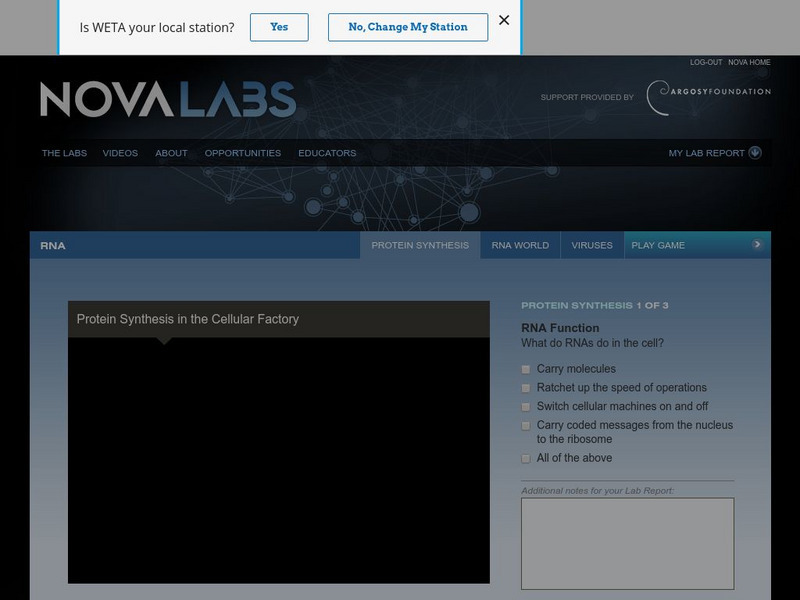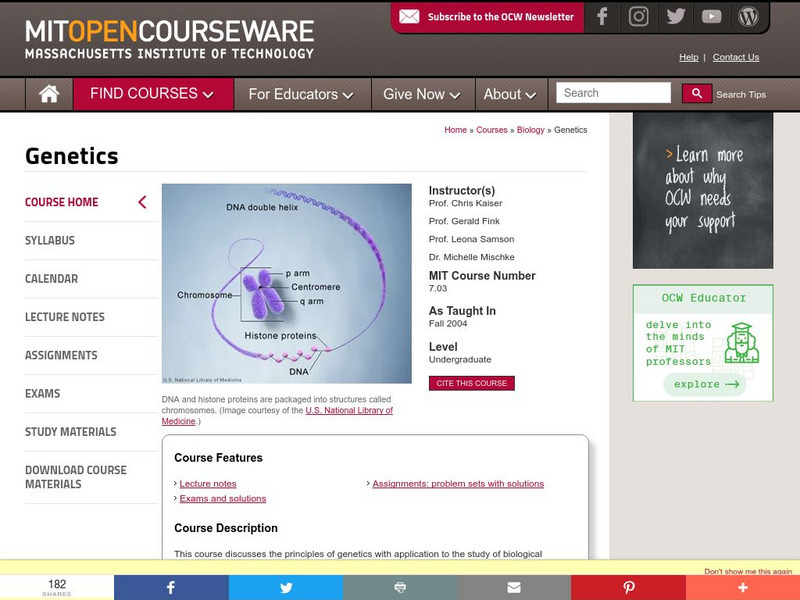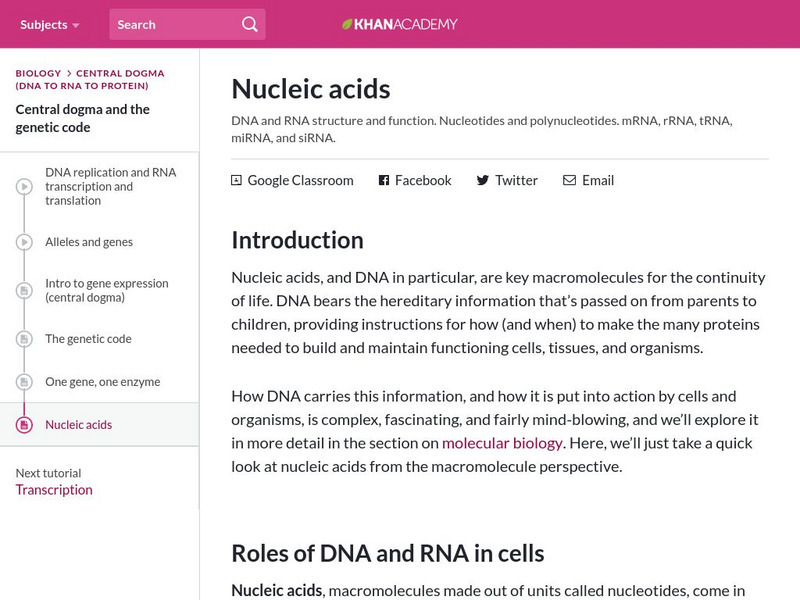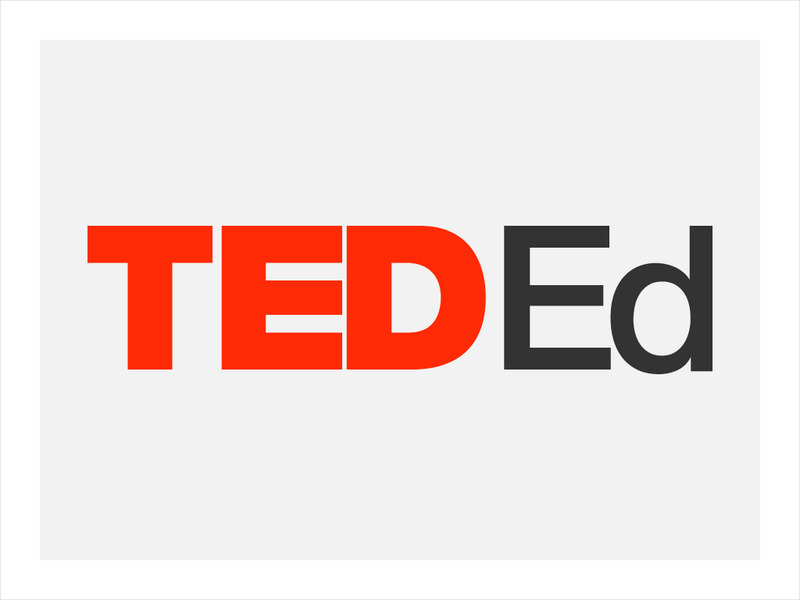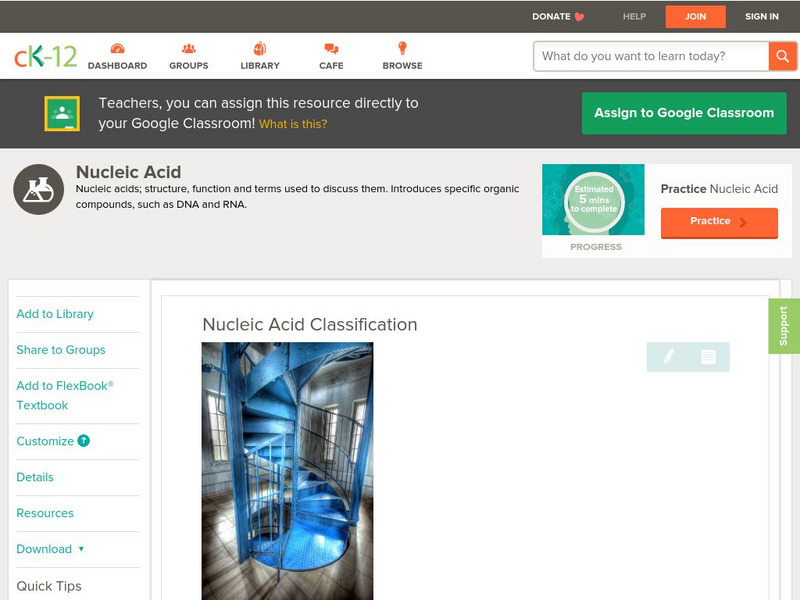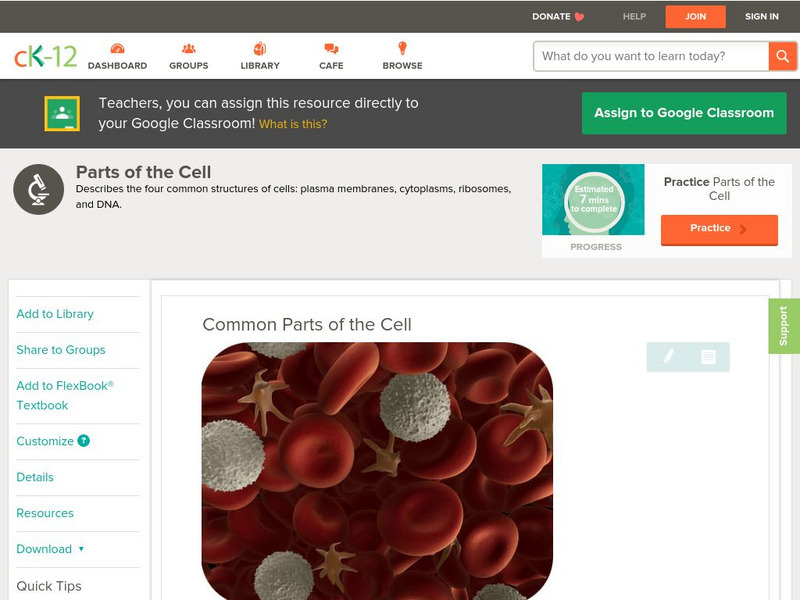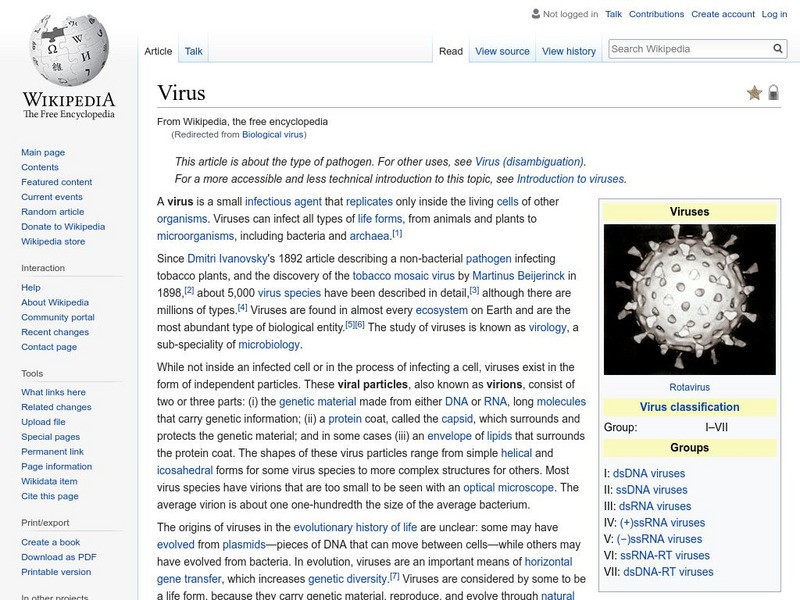Hi, what do you want to do?
University of Oxford (UK)
Univeristy of Oxford: Self Sustaining Chemical Systems: Living Cells
36-page tutorial takes a look at the organization of living cells.
PBS
Pbs: Nova Labs: Protein Synthesis in the Cellular Factory
Watch short animations, read informational text, and make hypotheses about different aspects of protein synthesis.
CK-12 Foundation
Ck 12: Common Parts of the Cell 1
[Free Registration/Login may be required to access all resource tools.] Online activity summarizes the cell theory, describes four parts all cells have in common, and the importance of the work of Robert Hooke and Anton van Leeuwenhoek.
Other
University of Cincinnati: Cells and Organelles
An in-depth discussion of the different parts of eukaryotic and prokaryotic cells as well as a thorough explanation of organelles within the cell. The text is better suited to high school and middle school. However, there is a picture of...
Famous Scientists
Famous Scientists: James Watson
Learn about the life and great discoveries of James Watson in this article. Learn about his most famous discovery of the molecular structure of DNA.
Other
San Diego Supercomputer Cente: Rosalind Elsie Franklin
The story of Rosalind Franklin, pioneer DNA researcher whose career was cut short by her early death is told here, including the role she played in the discovery of the structure of DNA.
Other
N zedge.com: Heroes: Maurice Wilkins
New Zealander Maurice Wilkins was a key researcher in the discovery of the structure of DNA. This resource offers a detailed biography of his life and career.
Other
World of Teaching: Protein Synthesis (Power Point)
This is a well structured presentation with lots of graphics on how proteins are formed from DNA and RNA.
Massachusetts Institute of Technology
Mit: Open Course Ware: Courses: Biology: Genetics
College-level course focusing on the principles of genetics. Course topics include structure and function of genes, chromosomes and genomes, biological variation, population genetics, use of genetic methods to analyze protein function,...
Dartmouth College
Dartmouth College: Epidemic: Rna Viruses
A good page devoted to the RNA family of viruses that differ slightly from standard DNA viruses. Discusses the difference and characteristics of such viruses.
Nobel Media AB
The Nobel Prize: Francis Crick Biographical
Read about the co-recipient of the 1962 Nobel Prize in Medicine. This biography includes a picture of Crick as well as information on his personal life. Most focus, however, is on his scientific contributions and discoveries "concerning...
Houghton Mifflin Harcourt
Harcourt: Biographies: Rosalind Franklin
This is a fantastic biography of Rosalind Franklin. It has links to both additional information and images to help illustrate the biography.
Khan Academy
Khan Academy: Nucleic Acids
Discover the structure and function of DNA and RNA, and understand nucleotides and polynucleotides.
TED Talks
Ted: Ted Ed: The Operating System of Life
Cells are almost like tiny factories run by robots, with the nucleus, DNA, proteins, lipids, and vitamins and minerals all playing critical roles. George Zaidan and Charles Morton lay out the blueprint of a cell and explain how...
Famous Scientists
Famous Scientists: Francis Crick
Discover Francis Crick, British molecular biologist, physicist, and neuroscientist who jointly won a Nobel Prize for his discoveries concerning the molecular structure of nucleic acids.
CK-12 Foundation
Ck 12: Physical Science: Nucleic Acid Classification
[Free Registration/Login may be required to access all resource tools.] Definition of nucleic acids and their structure and function.
Science Struck
Science Struck: Ribose vs. Deoxyribose
Explains what ribose and deoxyribose are, their chemical structure and properties, similarities and differences, their functions, and their biological importance.
CK-12 Foundation
Ck 12: Life Science: 2.6 Nucleus
Discover the structure and function of the nucleus of the cell.
National Health Museum
Access Excellence: Molecular Biology/primate Phylogeny
This lesson plan involves comparison of amino acids to create a phylogenetic tree of primates. Students will also use other species information to draw conclusions about evolutionary relationships.
Other
Hypertextbook: Large Molecules
This is a good, in-depth reference for the study of macromolecules in biology - lipids, proteins and carbohydrates. Includes images and links to other sources as well as a quiz for students to check understanding.
National Health Museum
Nhm: Amino Acid Sequences Show Evolution
This lesson plan focuses on differences in the amino acid sequence of hemoglobin and myoglobin proteins. They use the number of differences to create a phylogenetic tree.
CK-12 Foundation
Ck 12: Biology: Common Parts of the Cell
[Free Registration/Login may be required to access all resource tools.] Describes four parts all cells have in common.
University of Illinois
University of Illinois Urbana Champaign: Theoretical Biophysics Group
Excellent and comprehensive site created by the University of Illinois at Urbana-Champaign, Beckman Institute for Advanced Science and Technology. The site has resources about and links to information on a large number of topics in...
Wikimedia
Wikipedia: Virus
An encyclopedia article on viruses discusses what they are and their different classifications. It also gives several examples of viruses, how they can be treated, and gives speculation on their origins.
Other popular searches
- Dna Structure and Function
- Structure of Dna
- Dna Structure Powerpoint
- Dna Structure Model
- Dna Structure Concept Map
- Dna Structure Worksheets
- Modeling Dna Structure
- Dna Structure Paper
- Dna Structure Animations
- Dna Structure Lesson Plans
- Dna Structure Base Pair
- Discovery of Dna Structure






